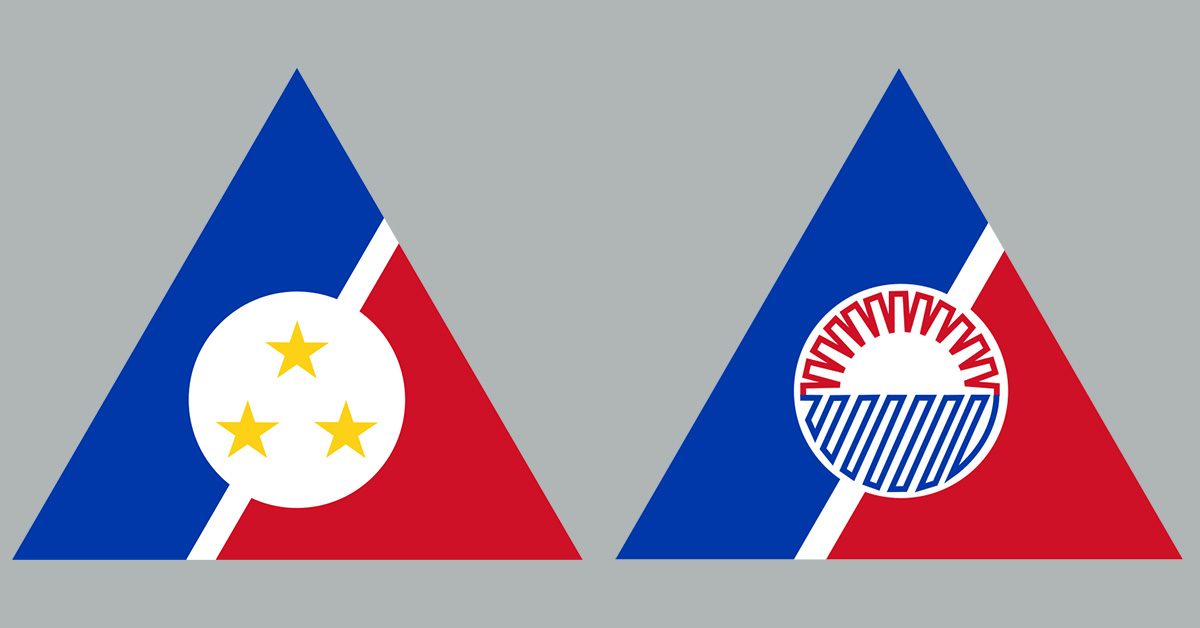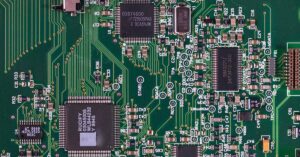Standard Employment Contract For Seafarers: What You Should Know?
How many among us seafarers fully read our contract before signing it? Let’s admit that we rarely read the contents of our contract and I’m sure most of us only look at the number of months and the salary amount indicated on it. We usually never spend time knowing other information stated on that contract. That is a habit that we need to change because that contract will protect and help us in times of difficulties.
The POEA or Philippine Overseas Employment Administration provides a standard employment contract for seafarers. On its Memorandum Circular No. 10, Series of 2010, the POEA amended the standard terms and conditions governing the overseas employment of Filipino seafarers on-board ocean-going ships.
I agree that it is time consuming and boring to read those lengthy information on the contract. So I took some sections from POEA’s Memorandum Circular No. 10, Series of 2010 that might catch your attention. Below are Section 20(A) or COMPENSATION AND BENEFITS FOR INJURY OR ILLNESS and Section 32 or SCHEDULE OF DISABILITY OR IMPEDIMENT FOR INJURIES SUFFERED AND DISEASES INCLUDING OCCUPATIONAL DISEASES OR ILLNESS CONTRACTED.
These sections fully describe the compensations you will receive if you got ill or injured while working on-board the ship. By reading it you will know how much your employer will pay you during that work-related accident or illness.
SECTION 20. COMPENSATION AND BENEFITS
A. COMPENSATION AND BENEFITS FOR INJURY OR ILLNESS
The liabilities of the employer when the seafarer suffers work-related injury or illness during the term of his contract are as follows:
1. The employer shall continue to pay the seafarer his wages during the time he is on board the ship;
2. If the injury or illness requires medical and/or dental treatment in a foreign port, the employer shall be liable for the full cost of such medical, serious dental, surgical and hospital treatment as well as board and lodging until the seafarer is declared fit to work or to be repatriated. However, if after repatriation, the seafarer still requires medical attention arising from said injury or illness, he shall be so provided at cost to the employer until such time he is declared fit or the degree of his disability has been established by the company-designated physician.
3. In addition to the above obligation of the employer to provide medical attention, the seafarer shall also receive sickness allowance from his employer in an amount equivalent to his basic wage computed from the time he signed off until he is declared fit to work or the degree of disability has been assessed by the company-designated physician. The period within which the seafarer shall be entitled to his sickness allowance shall not exceed 120 days. Payment of the sickness allowance shall be made on a regular basis, but not less than once a month.
The seafarer shall be entitled to reimbursement of the cost of medicines prescribed by the company-designated physician. In case treatment of the seafarer is on an out-patient basis as determined by the company-designated physician, the company shall approve the appropriate mode of transportation and accommodation. The reasonable cost of actual traveling expenses and/or accommodation shall be paid subject to liquidation and submission of official receipts and/or proof of expenses.
For this purpose, the seafarer shall submit himself to a post-employment medical examination by a company-designated physician within three working days upon his return except when he is physically incapacitated to do so, in which case, a written notice to the agency within the same period is deemed as compliance. In the course of the treatment, the seafarer shall also report regularly to the company-designated physician specifically on the dates as prescribed by the company-designated physician and agreed to by the seafarer. Failure of the seafarer to comply with the mandatory reporting requirement shall result in his forfeiture of the right to claim the above benefits.
If a doctor appointed by the seafarer disagrees with the assessment, a third doctor may be agreed jointly between the Employer and the seafarer. The third doctor’s decision shall be final and binding on both parties.
4. Those illnesses not listed in Section 32 of this Contract are disputably presumed as work-related.
5, In case a seafarer is disembarked from the ship for medical reasons, the employer shall bear the full cost of repatriation in the event the seafarer is declared (1) fit for repatriation; or (2) fit to work but the employer is unable to find employment for the seafarer on board his former ship or another ship of the employer.
6. In case of permanent total or partial disability of the seafarer caused by either injury or illness the seafarer shall be compensated in accordance with the schedule of benefits enumerated in Section 32 of his Contract. Computation of his benefits arising from an illness or disease shall be governed by the rates and the rules of compensation applicable at the time the illness or disease was contracted.
The disability shall be based solely on the disability gradings provided under Section 32 of this Contract, and shall not be measured or determined by the number of days a seafarer is under treatment or the number of days in which sickness allowance is paid.
7. It is understood and agreed that the benefits mentioned above shall be separate and distinct from, and will be in addition to whatever benefits which the seafarer is entitled to under Philippine laws such as from the Social Security System, Overseas Workers Welfare Administration , Employees’ Compensation Commission, Philippine Health Insurance Corporation and Home Development Mutual Fund (Pag-IBIG Fund).
SECTION 32. SCHEDULE OF DISABILITY OR IMPEDIMENT FOR INJURIES SUFFERED AND DISEASES INCLUDING OCCUPATIONAL DISEASES OR ILLNESS CONTRACTED.
HEAD
Traumatic head injuries that result to:
| 1. Aperture unfilled with bone not over three (3) inches without brain injury |
Gr. 9
|
| 2. Unfilled with bone over three (3) inches without brain injury |
Gr. 3
|
| 3. Severe paralysis of both upper or lower extremities or one upper and one lower extremity |
Gr. 1
|
| 4. Moderate paralysis of two (2) extremities producing moderate difficulty in movements with self-care activities |
Gr. 10
|
| 5. Slight paralysis affecting one extremity producing slight difficulty with self-care activities |
Gr. 10
|
| 6. Severe mental disorder or Severe Complex Cerebral function disturbance or post-traumatic psychoneurosis which require regular aid and attendance as to render worker permanently unable to perform any work |
Gr. 1
|
| 7. Moderate mental disorder or moderate brain functional disturbance which limits worker to the activities of daily living with some directed care or attendance |
Gr. 6
|
| 8. Slight mental disorder or disturbance that requires little attendance or aid and which interferes to a slight degree with the working capacity of the claimant |
Gr. 10
|
| 9. Incurable imbecility |
Gr. 1
|
FACE
| 1. Severe disfigurement of the face or head as to make the worker so repulsive as to greatly handicap him in securing or retaining |
Gr. 2
|
| 2. Moderate facial disfigurement involving partial ablation of the nose with big scars on face or head |
Gr. 5
|
| 3. Partial ablation of the nose or partial avulsion of the scalp |
Gr. 9
|
| 4. Complete loss of the power of mastication and speech function |
Gr. 1
|
| 5. Moderate constriction of the jaw resulting in moderate degree of difficulty in chewing and moderate loss of the power or the expression of speech |
Gr. 6
|
| 6. Slight disorder of mastication and speech function due to traumatic injuries to jaw or cheek bone |
Gr. 12
|
EYES
| 1. Blindness or total and permanent loss of vision of both eyes |
Gr. 1
|
| 2. Total blindness of one (1) eye and fifty percent (50%) loss of vision of the other eye |
Gr. 5
|
| 3. Loss of one eye or total blindness of one eye |
Gr. 7
|
| 4. Fifty percent (50%) loss of vision of one eye |
Gr. 10
|
| 5. LagopthaImos, one eye |
Gr. 12
|
| 6. Ectropion, one eye |
Gr. 12
|
| 7. Ephiphora, one eye |
Gr. 12
|
| 8. Ptosis, one eye |
Gr. 12
|
Note: (Smeller’s Chart – used to grade for near and distant vision).
NOSE AND MOUTH
| 1. Considerable stricture of the nose (both sides) hindering breathing |
Gr. 11
|
| 2. Loss of the sense of hearing in one ear |
Gr. 11
|
| 3. Injuries to the tongue (partial amputation or adhesion) or palate-causing defective speech |
Gr. 10
|
| 4. Loss of the three (3) teeth restored by prosthesis |
Gr. 14
|
EARS
| 1. For the complete loss of the sense of hearing on both ears |
Gr. 3
|
| 2. Loss of two (2) external ears |
Gr. 8
|
| 3. Complete loss of the sense of hearing in one ear |
Gr. 11
|
| 4. Loss of one external ear |
Gr. 12
|
| 5. Loss of one half (1/2) of an external ear |
Gr. 14
|
NECK
| 1. Such injury to the throat as necessitates the wearing of a tracheal tube |
Gr. 6
|
| 2. Loss of speech due to injury to the vocal cord |
Gr. 9
|
| 3. Total stiffness of neck due to fracture or dislocation of the cervical spines |
Gr. 8
|
| 4. Moderate stiffness or two thirds (2/3) loss of motion of the neck |
Gr. 10
|
| 5. Slight stiffness of the neck or one third (1/3) loss of motion |
Gr. 12
|
CHEST-TRUNK-SPINE
| 1. Fracture of four (4) or more ribs resulting to severe limitation of chest |
Gr. 6
|
| 2. Fracture of four (4) or more ribs with intercostal neuralgia resulting in moderate limitation of chest expansion |
Gr. 9
|
| 3. Slight limitation of chest expansion due to simple rib functional without myositis or intercostal neuralgia |
Gr. 12
|
| 4. Fracture of the dorsal or lumber spines resulting severe or total rigidity of the trunk or total loss of lifting power of heavy objects |
Gr. 6
|
| 5. Moderate rigidity or two thirds (2/3) loss of motion or lifting power of the trunk |
Gr. 8
|
| 6. Slight rigidity or one third (1/3) loss of motion or lifting power of the trunk |
Gr. 11
|
| 7. Injury to the spinal cord as to make walking impossible without the aid of a pair of crutches |
Gr. 4
|
| 8. Injury to the spinal cord as to make walking impossible even with the aid of a pair of crutches |
Gr. 1
|
| 9. Injury to the spinal cord resulting to incontinence of urine and feces |
Gr. 1
|
ABDOMEN
| 1. Loss of the spleen |
Gr. 8
|
| 2. Loss of one kidney |
Gr. 7
|
| 3. Severe residuals of impairment of intra-abdominal organs which requires regular aid and attendance that will unable worker to seek any gainful employment |
Gr. 1
|
| 4. Moderate residuals of disorder of the intra-abdominal organs secondary to trauma resulting to impairment of nutrition , moderate tenderness, nausea, vomiting , constipation or diarrhea |
Gr. 7
|
| 5. Slight residuals or disorder of the intra-abdominal organs resulting in impairment of nutrition, slight tenderness and/or constipation or diarrhea |
Gr. 12
|
| 6. Inguinal hernia secondary to trauma or strain |
Gr. 12
|
PELVIS
| 1. Fracture of the pelvic rings as to totally incapacitate worker to work |
Gr. 1
|
| 2. Fracture of the pelvic ring resulting to deformity and lameness |
Gr. 6
|
URINARY AND GENERATIVE ORGANS
| 1. Total loss of penis |
Gr. 7
|
| 2. Total loss of both testicles |
Gr. 7
|
| 3. Total loss of one testicle |
Gr. 11
|
| 4. Scars on the penis or destruction of the parts of the cavernous body or urethra interfering with erection or markedly affecting coitus |
Gr. 9
|
| 5. Loss of one breast |
Gr. 11
|
| 6. Prolapse of the uterus |
Gr. 13
|
| 7. Great difficulty in urinating |
Gr. 13
|
| 8. Incontinence of urine |
Gr. 10
|
THUMBS AND FINGERS
| 1. Total loss of one thumb including metacarpal bone |
Gr. 9
|
| 2. Total loss of one thumb |
Gr. 10
|
| 3. Total loss of one index finger including metacarpal bone |
Gr. 10
|
| 4. Total loss of one index finger |
Gr. 11
|
| 5. Total loss of one middle finger including metacarpal bone |
Gr. 11
|
| 6. Total loss of one middle finger |
Gr. 12
|
| 7. Total loss of one ring finger including metacarpal bone |
Gr. 12
|
| 8. Total loss of one ring finger |
Gr. 13
|
| 9. Total loss of one small finger including metacarpal bone |
Gr. 13
|
| 10. Total loss of one small finger |
Gr. 14
|
| 11 . Loss of two or more fingers. Compensation for the loss of use of two (2) or more fingers or one (1) or more phalanges of two or more digits of a hand must be proportioned to the loss of the hand occasioned thereby but shall not exceed the compensation for the loss of a hand: | |
| a. Loss of five (5) fingers of one hand |
Gr. 6
|
| b. Loss of thumb, index fingers and any of 2 or more fingers of the same hand |
Gr. 6
|
| c. Loss of the thumb, index finger and anyone of the remaining fingers of the same hand |
Gr. 7
|
| d. Loss of thumb and index finger |
Gr. 8
|
| e. Loss of three (3) fingers of one hand not including thumb and index finger |
Gr. 9
|
| f. Loss of the index finger and anyone of the other fingers of the same hand excluding thumb |
Gr. 9
|
| g. Loss of two (2) digits of one hand not including thumb and index finger |
Gr. 10
|
| 12. Loss of ten (10) fingers of both hands |
Gr. 3
|
HANDS
| 1. Total loss of use of both hands or amputation of both hands at wrist joints or above |
Gr. 1
|
| 2. Amputation of a hand at carpo-metacarpal joints |
Gr. 5
|
| 3. Amputation between wrist and elbow joint |
Gr. 5
|
| 4. Loss of grasping power for small objects between the fold of the finger of one hand |
Gr. 10
|
| 5. Loss of grasping power for large objects between fingers and palm of one hand |
Gr. 10
|
| 6. Loss of opposition between the thumb and tips of the fingers of one hand |
Gr. 9
|
| 7. Ankyclosed wrist in normal position |
Gr. 10
|
| 8. Ankyclosed wrist in position one third (1/3) flexed or half extended and/or severe limited action of a wrist |
Gr. 11
|
SHOULDER AND ARM
| 1. Inability to turn forearm (forearm in normal position-supination) |
Gr. 11
|
| 2. Inability to turn forearm (forearm in abnormal position – pronation) |
Gr. 10
|
| 3. Disturbance of the normal carrying angle or weakness of an arm or a forearm due to deformity of moderate atrophy of muscles |
Gr. 11
|
| 4. Stiff elbow at full flexion or extension (one side) |
Gr. 7
|
| 5. Stiff elbow at right angle flexion |
Gr. 8
|
| 6. FIaiI elbow joint |
Gr. 9
|
| 7. Pseudoarthrosis of the humerus with musculospiral or radial paralysis |
Gr. 6
|
| 8. Ankylosis of one (1) shoulder, the shoulder blade remaining mobile |
Gr. 9
|
| 9. Ankylosis of one shoulder, the shoulder blade remaining rigid |
Gr. 8
|
| 10. Unreduced dislocation of one (1) shoulder |
Gr. 8
|
| 11. Ruptured biceps or pseudoarthrosis of the humerus, close (one side) |
Gr. 11
|
| 12. Inability to raise arm more than halfway from horizontal to perpendicular |
Gr. 11
|
| 13. Ankylosis of the shoulder joint not permitting arm to be raised above a level with a shoulder and/or irreducible fracture or faulty union collar bone |
Gr. 10
|
| 14. Total paralysis of both upper extremities |
Gr. 1
|
| 15. Total paralysis of one upper extremity |
Gr. 3
|
| 16. Amputation of one (1) upper extremity at or above the elbow |
Gr. 4
|
| 17. Scar the size of the palm in one extremity |
Gr. 14
|
LOWER EXTREMITIES
| 1. Loss of a big toe |
Gr. 12
|
| 2. Loss of a toe other than the big one |
Gr. 14
|
| 3. Loss of ten (10) digits of both feet |
Gr. 5
|
| 4. Loss of a great toe of one foot + one toe |
Gr. 10
|
| 5. Loss of two toes not including great toe or next to it |
Gr. 12
|
| 6. Loss of three (3) toes excluding great toe of a foot |
Gr. 10
|
| 7. Loss of four (4) excluding great toe of a foot |
Gr. 9
|
| 8. Loss of great toe and two (2) other toes of the same foot |
Gr. 9
|
| 9. Loss of five digits of a foot |
Gr. 8
|
| 10. Loss of both feet at ankle joint or above |
Gr. 1
|
| 11 . Loss of one foot at ankle joint or above |
Gr. 6
|
| 12. Depression of the arch of a foot resulting in weak foot |
Gr. 12
|
| 13. Loss of one half (1/2) metatarsus of one (1) foot |
Gr. 8
|
| 14. Loss of whole metatarsus or forepart of foot |
Gr. 7
|
| 15. Tearing of achilles tendon resulting in the impairment of active flexion and extension of a foot |
Gr. 12
|
| 16. Malleolar fracture with displacement of the foot inward or outward |
Gr. 10
|
| 17. Complete immobility of an ankle joint in abnormal position |
Gr. 10
|
| 18. Complete immobility of an ankle joint in normal position |
Gr. 11
|
| 19. Total loss of a leg or amputation at or above the knee |
Gr. 3
|
| 20. Stretching leg of the ligaments of a knee resulting in instability of the joint |
Gr. 10
|
| 21 . Ankylosis of a knee in genuvalgum of varum |
Gr. 10
|
| 22. Pseudoarthrosis of a knee cap |
Gr. 10
|
| 23. Complete immobility of a knee joint in full extension |
Gr. 10
|
| 24. Complete immobility of a knee joint in strong flexion |
Gr. 7
|
| 25. Complete immobility of a hip joint in flexion of the thigh |
Gr. 5
|
| 26. Complete immobility of a hip joint in full extension of the thigh |
Gr. 9
|
| 27. Slight atrophy of calf of leg muscles without apparent shortening or joint lesion or disturbance of weight-bearing line |
Gr. 13
|
| 28. Shortening of a lower extremity from one to three centimeters with either joint lesion or disturbance of weight-bearing joint |
Gr. 13
|
| 29. Shortening of 3 to 6 cm with slight atrophy of calf or thigh muscles |
Gr. 12
|
| 30. Shortening of 3 to 6 cm with either joint lesion or disturbance of weight-bearing joint |
Gr. 11
|
| 31 . Irregular union of fracture with joint stiffness and with shortening of 6 to 9 cm producing permanent Iameness |
Gr. 9
|
| 32. Irregular union of fracture in a thigh or leg with shortening of 6 to 9 cm |
Gr. 10
|
| 33. Failure of fracture of both hips to unite |
Gr. 1
|
| 34. Failure of fracture of a hip to unite |
Gr. 3
|
| 35. Paralysis of both lower extremities |
Gr. 1
|
| 36. Paralysis of one lower extremity |
Gr. 3
|
| 37 . Scar the size of a palm or larger left on an extremity |
Gr. 14
|
NOTE: Any item in the schedule classified under Grade 1 shall be considered or shall constitute total and permanent disability.
|
IMPEDIMENT GRAD
|
IMPEDIMENT
|
||
|
1
|
US$ 50,000
|
x
|
120.00%
|
|
2
|
US$ 50,000
|
x
|
88.81%
|
|
3
|
US$ 50,000
|
x
|
78.36%
|
|
4
|
US$ 50,000
|
x
|
68.66%
|
|
5
|
US$ 50,000
|
x
|
58.96%
|
|
6
|
US$ 50,000
|
x
|
50.00%
|
|
7
|
US$ 50,000
|
x
|
41.80%
|
|
8
|
US$ 50,000
|
x
|
33.59%
|
|
9
|
US$ 50,000
|
x
|
26.12%
|
|
10
|
US$ 50,000
|
x
|
20.15%
|
|
11
|
US$ 50,000
|
x
|
14.93%
|
|
12
|
US$ 50,000
|
x
|
10.45%
|
|
13
|
US$ 50,000
|
x
|
6.72%
|
|
14
|
US$ 50,000
|
x
|
3.74%
|
source: www.poea.gov.ph
You can also download the full memorandum circular here.
Share this content:















2 comments